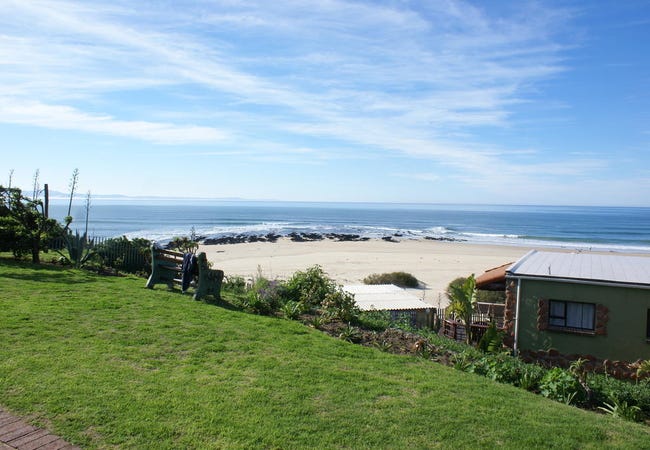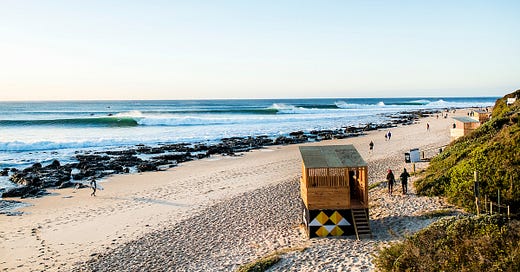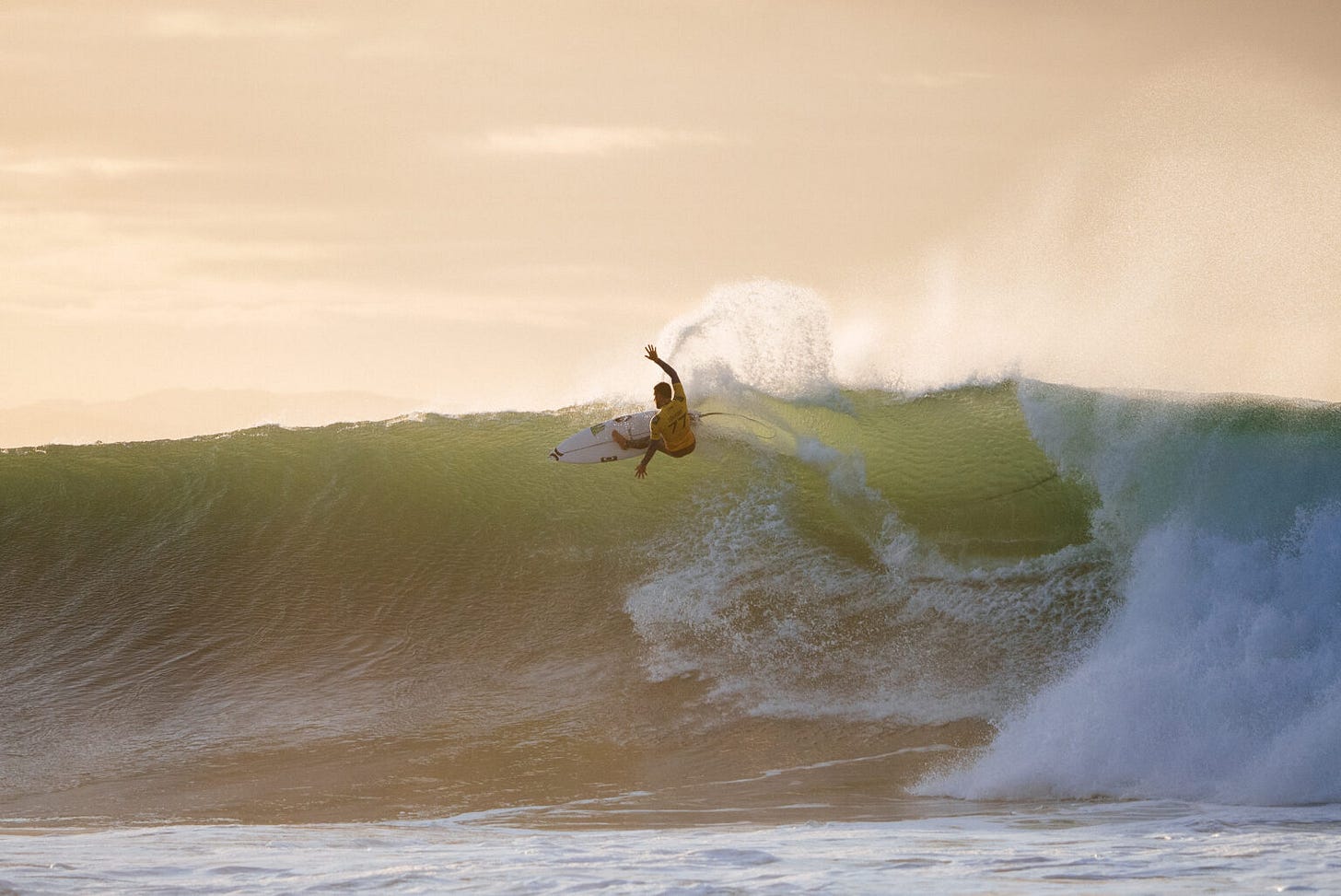Tuesday Spot Check: Jeffreys Bay
With the J-Bay Classic, a new WSL speciality invite event featuring Occy, Steph Gilmore and Sierra Kerr kicking off this week, we look at the iconic South African pointbreak.
Where do you start, and where do you stop, when talking about Jeffreys Bay, universally known as one of, if not, the best waves in the world? This wave (or in fact series of interlinking waves) has everything any surfer could ever need, with the possible exception of warm water.
Well, we could start, at the start. Jeffreys Bay is located about an hour’s drive from the city of Port Elizabeth, pretty much smack bang in the middle between Cape Town and Durban. The coastline is part of an ancient lava flow that developed more than 183 million years ago during the supercontinent Gondwana era when all the continents were connected. This particular lava flow is the longest of any known within our solar system and extends more than 2,500 miles with an average 100-mile width.
The Gamtoos and Kabeljous Rivers have swept down through the lava-formed mountains over millions of years to create valleys that extend to the ocean just inside Saint Francis Bay. These nearshore valleys and the inland sheer mountain walls help to funnel winds down into the Port Elizabeth and J-Bay areas.
Much more recently, just over 100,000 years ago, the first homo sapiens camped in caves near the Klasies River, less than 30 miles away from J-Bay. At the time, their remains, discovered in the 1960s, were the oldest ever found. And while the Homo Sapiens were a significant evolutionary step from the Homo Heidelbergensis, they didn’t hit the coast.
Surfer Standupus first arrived in J-Bay in 1964. The early longboard pioneers discovered the end sections were perfect for their heavy logs. However as time progressed, and surfboards became shorter and more manoeuvrable, the focus soon moved up to the aptly named Supertubes, the barreling 400-yard section that you have mostly seen in videos and photos, or the webcasts from the Billabong Pro, which was (mostly) held there every July. It was Tom Curren’s first wave ridden here that became one of the sport’s iconic moments.
When the conditions are right and a six-to-eight foot swell is being airbrushed by a light sou-west wind (which through May to September happens with ridiculous regularity) Supertubes throws up some of the most perfect, powerful and paciest tubes on the planet. And if you time it right paddling through the keyhole (a big if granted) you can even be in the line-up with dry hair. Six wave sets roll in, each wave a mirror image of the last, with six-second tubes the norm. It’s also a known scientific fact that you will never travel as fast on a surfboard as you will if you manage to catch a six-foot wave at Supers.
However, therein lies the catch. Catching a six-foot wave at Supers can sometimes be a frustratingly difficult task. While the constant flow of tourists to Jeffries Bay will always ensure a crowd, it has been the locals' response to this endless invasion that will probably cause you the most frustration. Known as Jeffries Bay Underground (JBU) this is a close-knit group of hardcore local surfers who match intense talent and local knowledge with some good old-fashioned violent localism.
Luckily, by showing them respect, and with the wave so long and so consistent, it is still possible to have the best surf of your life, day after day after day. Another important factor is that the locals tend to only come out in numbers when the conditions are absolutely flawless. When conditions aren’t perfect (but still better than 99 per cent of other waves in the world) you can score loads of hassle-free surfs.
In addition, if the action at Supertubes is too intense, there are plenty of other sections offering quality waves and a mellower vibe. After Supertubes, comes Impossibles (named with good reason), before sections known as Tubes, Point and the Albatross, which all offer set takeoff zones, less crowds and long, wally fun waves.
There is also a range of quality waves nearby, the underrated Magna Tubes just round the corner and Kitchen Windows about a mile further up. The perhaps overrated Cape St Francis and Seal Point are also super fun righthand points, with Seal Point needing nowhere near as much swell are Jeffries.

However, it is J-Bay that will ultimately break your heart and make you deliriously happy. And if all the planets align and you have Dalai Llama-like Karma, it’s possible to ride a wave from Supertubes through to the Point, by which time you’ll have legs like jelly, a heart beating like a hummingbird’s, an 800-yard paddle back out and a sense that no matter what happens in the rest of your life, you can die happy.
FACT BOX
WHEN TO GO: May-September. While always cold, the consistent swell and offshores mean loads of back-to-back swells. Out-of-season is less consistent but has the advantage of less crowds.
AIRPORT: Fly into Johannesburg, Cape Town or Durban international airports, then a domestic flight to Port Elizabeth (PZE).
ACCOMMODATION: Island Vibe, in front of the break Kitchen Windows has an amazing location, although is a bit of a walk from Supers. Also try Ubuntu, Hard Rock and Phoenix backpackers for cheap beds and great times.
WATCH OUT FOR: Sharks are abundant, large and sighted all too regularly. Avoid on-dark surfs and never, ever surf on your own, no matter how enticing it looks.
BOARDS: The full quiver, from fish, shortboard to big guns, all aimed at down-the-line speed. This wave has serious range, and paddling power is always handy.
RUBBER: In winter a 4/3 is a minimum requirement, with booties a necessity, and gloves and hoods often worn by locals.
AFTER DARK: Although laid back, like the town, there is still fun to be had at J-Bay, with a thriving backpacker scene and surfers from all over the world.
ALTERNATIVE EXCITEMENT: On a flat day, a safari through the the Addo Elephant Park is a must, the park being one the Eastern Cape’s biggest with all Africa’s big game on display.





